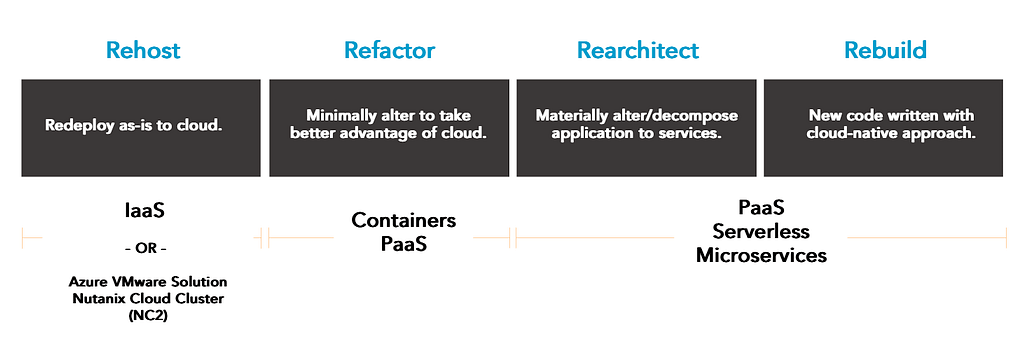2024 has been a struggle for many organizations with the Broadcom acquisition of VMware, from increased costs for renewals to uncertainty in the EUC world with Horizon View. The concern from customers as to what their alternatives are is defintely keeping me busy throughout the week helping our customers navigate the waters and the journey of what comes next.
Another unexpected, borderline disappointing discussion we’re having now is the decision by Nutanix to discontinue Xi Leap in April of 2025. While maybe not surprising in the wake of the capabilities and extensability of Nutanix Cloud Clusters (NC2) for initially AWS and now Azure, many businesses are left wondering about their next steps for Disaster Recovery (DR) with Nutanix – and specifically with AHV.
Xi Leap provided a very simple and robust method for Nutanix customers to gain access to DR as a Service (“DRaaS”), without needing to invest in new skills (such as AWS or Azure) or in infrastructure for a secondary cluster. Yes there were/are other Colo and Service Providers out there offering Nutanix DRaaS, but many customers enjoyed the single point of contact with Nutanix for both on-premises and DR.

As we consider alternatives to Xi Leap, now is also the perfect time to consider the 4 R’s of Cloud migrations to see if now is the time to modernize the application architecture landscape.

DRaaS Alternatives
Let’s take a brief look at some current alternatives to Nutanix Xi Leap – both within the Nutanix ecosystem and outside.
1. Nutanix Clusters (NC2) on AWS or Azure

Benefits:
- Seamless Integration: If you’re already using Nutanix, transitioning to NC2 in AWS or Azure is a breeze. Your existing workflows and management tools can be leveraged with minimal changes.
- Scalability: Benefit from the scalability and flexibility of public clouds without re-architecting your applications.
- Cost Efficiency: Only pay for what you use, reducing the need for significant upfront investments. Start with a pilot light cluster for just what you need, and expand and shrink as workloads require additional resources.
- Another benefit with NC2 on Azure is the ability to leverage existing Microsoft Azure Consumption Committments (“MACC”) to purchase both Nutanix licensing AND Azure Bare Metal infrastructure.
- Portability: If you already own Nutanix licenses, you can move licenses between on-premises and Azure – think about shuttering your DR facility at the time of a HW refresh, but migrating to NC2 and not needing to buy any new licensing!
Considerations:
- Learning Curve: Familiarity with both Nutanix and the chosen public cloud platform (AWS or Azure) is necessary.
- Networking: Ensure your network setup can handle the integration without performance hits.
- Workloads: Consider where you land your workloads. Do you replicate everything – if so, you need to understand the requirements during failover to expand the NC2 cluster to ensure you optimize costs. Or do you run Test/Dev in NC2 to validate connectivity and operations, and during failover, just expand the cluster? Options are there, but careful planning can ensure you don’t have cost overruns!
2. Migrating to a Public Cloud
Benefits:
- Native Tools and Services: Utilize the native tools and services offered by public cloud providers like AWS, Azure, or Google Cloud for DR. These platforms offer robust solutions tailored for various DR scenarios.
- Global Reach: Take advantage of the extensive global infrastructure of public clouds, ensuring your DR site is geographically distant from your primary site.
Considerations:
- Migration Effort: Significant effort might be required to re-architect applications for the cloud.
- Cost Management: Keep an eye on costs, as they can spiral if not managed correctly.
3. Deploying a Second Nutanix Cluster for DR
Benefits:
- Familiar Environment: Stay within the Nutanix ecosystem, ensuring a familiar environment for your IT team.
- Performance: Dedicated resources for DR ensure predictable performance.
- Control: Full control over your DR setup, allowing for tailored solutions to meet specific needs.
Considerations:
- Cost: Higher upfront costs compared to cloud solutions due to hardware and infrastructure investments.
- Management: Requires ongoing management and maintenance of the additional cluster.
4. Leveraging a DRaaS Provider
Benefits:
- Expertise: DRaaS providers bring specialized knowledge and experience, ensuring best practices are followed.
- Simplified Management: Offload the complexity of DR management to experts, freeing up your internal resources.
- Flexibility: Many DRaaS providers offer flexible plans that can scale with your needs.
Considerations:
- Vendor Lock-in: Be mindful of potential vendor lock-in and ensure you have an exit strategy.
- Compliance: Verify that the DRaaS provider can meet your specific compliance and regulatory requirements.
Wrap Up
The discontinuation of Nutanix’s Xi Leap might feel like a curveball, but it’s also an opportunity to explore new and potentially more efficient DR strategies. Whether you stick with Nutanix by moving to NC2, migrating to a public cloud, deploying a second Nutanix cluster, or leveraging a DRaaS provider, each option offers unique benefits and challenges. Assess your needs, resources, and long-term goals to determine the best path for your organization’s disaster recovery.
Happy exploring, and may your DR strategy be ever-resilient!
Thanks for reading!